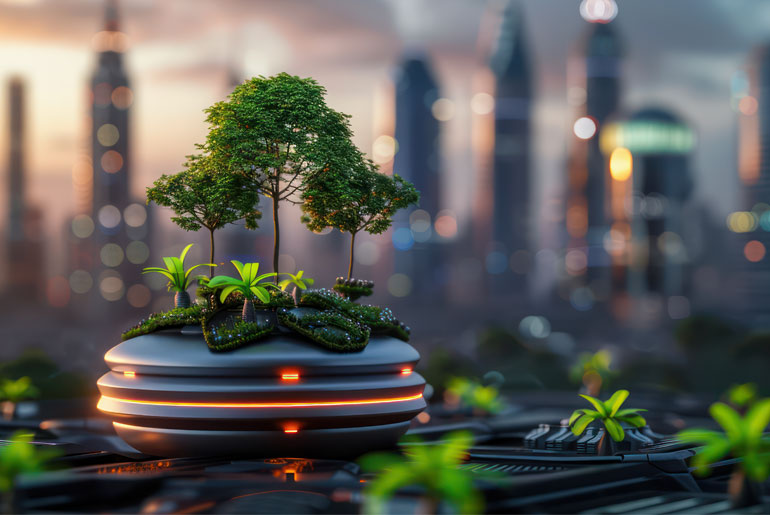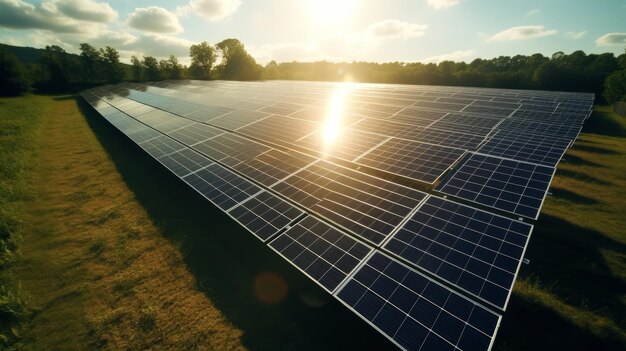
Green Technology: Innovations Driving Sustainability – Your Essential Guide to a Greener Future
In an era defined by environmental challenges, from climate change and pollution to resource depletion, humanity is turning to a powerful ally: Green Technology. Far from being just a buzzword, green technology (often called "Greentech" or "Sustainable Technology") represents a revolutionary shift in how we live, work, and interact with our planet. It’s about creating solutions that meet our needs without compromising the ability of future generations to meet theirs.
This comprehensive guide will dive deep into the world of green technology, exploring its importance, key innovations, and how these advancements are paving the way for a more sustainable and resilient future for everyone.
What Exactly is Green Technology? Understanding the Core Concept
At its heart, Green Technology refers to any technology or application that is designed to protect the natural environment, conserve resources, and mitigate the negative impacts of human activities. Think of it as technology with a conscience – developed with the planet in mind, aiming to reduce our "carbon footprint" (the total greenhouse gases caused by an individual, event, organization, or product).
Key principles of Green Technology include:
- Sustainability: Ensuring that resources are used in a way that can be maintained indefinitely.
- Resource Efficiency: Using fewer materials, energy, and water to achieve the same or better results.
- Pollution Prevention: Designing processes and products that create less waste and harmful emissions.
- Waste Reduction: Minimizing the amount of trash sent to landfills through recycling, reuse, and composting.
- Renewable Energy: Shifting away from fossil fuels (like coal, oil, and natural gas) towards energy sources that replenish naturally (like sun and wind).
- Biodiversity Protection: Developing solutions that safeguard the variety of life on Earth.
Green technology isn’t just one thing; it’s a vast and rapidly evolving field that touches almost every aspect of our lives, from how we power our homes to how we grow our food and travel.
Why is Green Technology So Important Right Now?
The urgency for green technology has never been greater. Here’s why it’s a critical component of our future:
- Combating Climate Change: The burning of fossil fuels releases greenhouse gases, trapping heat and causing global warming. Green technologies like solar and wind power offer clean alternatives, drastically reducing these emissions.
- Conserving Natural Resources: Our planet has finite resources. Green tech promotes efficiency and the use of renewable materials, ensuring we don’t deplete essential resources like water, minerals, and forests.
- Reducing Pollution: From cleaner air in our cities to healthier oceans free of plastic, green innovations help prevent and clean up pollution, leading to better public health and thriving ecosystems.
- Creating Economic Opportunities: The green technology sector is a booming industry, creating millions of jobs in research, manufacturing, installation, and maintenance, boosting economies worldwide.
- Enhancing Energy Security: Relying on domestic renewable energy sources reduces dependence on volatile international oil markets, making nations more energy independent and stable.
- Improving Quality of Life: Cleaner air and water, less noise pollution from quieter electric vehicles, and more sustainable living spaces contribute to a healthier and more enjoyable life for everyone.
Key Innovations in Green Technology Driving Sustainability
The pace of innovation in green technology is breathtaking. Here are some of the most impactful advancements shaping our sustainable future:
1. Renewable Energy Technologies
This is perhaps the most well-known area of green tech, focusing on harnessing naturally replenishing energy sources.
- Solar Power:
- Photovoltaic (PV) Panels: These panels convert sunlight directly into electricity. Advancements in efficiency and cost reduction have made solar power increasingly competitive for homes, businesses, and utility-scale solar farms.
- Concentrated Solar Power (CSP): Uses mirrors to focus sunlight onto a receiver, heating a fluid that then generates electricity through a turbine. Ideal for large-scale power generation.
- Wind Power:
- Wind Turbines: Giant propellers capture kinetic energy from the wind and convert it into electricity. Both onshore (land-based) and offshore (sea-based) wind farms are growing rapidly, with turbines becoming larger and more efficient.
- Hydropower:
- Hydroelectric Dams: Generate electricity by harnessing the force of flowing water. While large dams can have environmental impacts, smaller "run-of-river" hydro projects are also being developed.
- Geothermal Energy:
- Taps into the Earth’s internal heat to generate electricity or provide direct heating/cooling for buildings. It’s a constant, reliable source of energy.
- Bioenergy:
- Uses organic matter (biomass) like agricultural waste, dedicated energy crops, or algae to produce electricity, heat, or biofuels (like ethanol and biodiesel) for transportation.
2. Sustainable Transportation
Moving people and goods without relying heavily on fossil fuels is crucial for reducing emissions.
- Electric Vehicles (EVs):
- Cars, buses, trucks, and even bikes powered by rechargeable batteries. They produce zero tailpipe emissions, contributing to cleaner air in cities. Battery technology is rapidly improving in terms of range, charging speed, and cost.
- Advanced Public Transportation:
- Investments in electric trains, trams, and buses, along with smart routing systems, encourage mass transit use, reducing individual car dependency.
- Sustainable Aviation Fuels (SAFs):
- Biofuels and synthetic fuels derived from non-fossil sources are being developed to power aircraft, significantly reducing aviation’s carbon footprint.
- Hydrogen Fuel Cell Technology:
- Hydrogen can be used in fuel cells to generate electricity, with water as the only byproduct. "Green hydrogen" produced using renewable energy is seen as a promising future fuel for heavy transport and industry.
3. Smart Grids & Energy Efficiency
It’s not just about producing clean energy, but also about using it wisely.
- Smart Grids:
- Modernized electricity networks that use digital technology to monitor, control, and manage energy flow more efficiently. They can integrate diverse renewable sources, respond to demand fluctuations, and prevent outages.
- Energy-Efficient Appliances & Lighting:
- Innovations like LED lighting, smart thermostats, and highly efficient refrigerators significantly reduce household energy consumption.
- Industrial Efficiency:
- New processes, materials, and technologies that help industries use less energy and water, and produce less waste during manufacturing.
- Energy Storage Solutions:
- Crucial for renewable energy, as sun and wind aren’t always available. Advances in battery technology (like lithium-ion, solid-state, and flow batteries) allow us to store excess renewable energy for later use.
4. Waste Management & Circular Economy
Moving away from the "take-make-dispose" model to one where resources are kept in use for as long as possible.
- Advanced Recycling Technologies:
- Beyond traditional recycling, new methods can break down complex plastics into their original components, making them truly recyclable multiple times.
- Waste-to-Energy Plants:
- Facilities that convert non-recyclable waste into electricity or heat through incineration, gasification, or pyrolysis.
- Composting & Anaerobic Digestion:
- Processes that convert organic waste (food scraps, yard waste) into nutrient-rich compost or biogas (renewable natural gas).
- Upcycling:
- Transforming discarded materials into new products of higher quality or value, preventing waste and promoting creativity.
- Product-as-a-Service Models:
- Companies retaining ownership of products (e.g., washing machines, lighting systems) and selling their use, incentivizing durability, repair, and recycling.
5. Green Building & Sustainable Infrastructure
Designing and constructing buildings and cities with minimal environmental impact.
- Eco-Friendly Materials:
- Using sustainable materials like bamboo, recycled steel, timber from sustainably managed forests, and innovative low-carbon concrete.
- Energy-Efficient Design:
- Architectural designs that maximize natural light, ventilation, and insulation, reducing the need for artificial heating and cooling.
- Green Roofs & Walls:
- Vegetated roofs and walls that provide insulation, absorb rainwater, reduce urban heat island effects, and support biodiversity.
- Smart Building Systems:
- Automated systems that optimize lighting, heating, ventilation, and air conditioning based on occupancy and external conditions.
- Permeable Pavements:
- Materials that allow rainwater to seep through, reducing stormwater runoff and replenishing groundwater.
6. Sustainable Agriculture & Food Technology
Innovations that produce food more sustainably, with less impact on land, water, and climate.
- Precision Agriculture:
- Using GPS, sensors, drones, and data analytics to optimize crop yields, reduce water usage, and minimize fertilizer/pesticide application.
- Vertical Farming:
- Growing crops in vertically stacked layers, often indoors, using controlled environments and minimal land, water, and transportation.
- Alternative Proteins:
- Development of plant-based meats, lab-grown meat (cultivated meat), and insect-based proteins to reduce the environmental footprint of traditional livestock farming.
- Water-Saving Irrigation:
- Technologies like drip irrigation deliver water directly to plant roots, significantly reducing waste.
- Biodiversity-Friendly Farming:
- Practices that support natural ecosystems within farms, such as agroforestry and integrated pest management.
7. Water Management Technologies
Ensuring access to clean water while managing this precious resource responsibly.
- Advanced Filtration & Purification:
- New membrane technologies and treatment processes that make even highly contaminated water safe for drinking or reuse.
- Desalination:
- More energy-efficient methods for removing salt from seawater, providing freshwater in arid regions.
- Wastewater Treatment & Reuse:
- Systems that treat wastewater to a high standard, making it suitable for irrigation, industrial processes, or even potable reuse.
- Smart Water Metering:
- Technologies that monitor water usage in real-time, helping consumers and utilities identify leaks and conserve water.
8. Carbon Capture, Utilization, and Storage (CCUS)
An emerging area focused on removing carbon dioxide from the atmosphere or directly from industrial emissions.
- Direct Air Capture (DAC):
- Technology that chemically filters CO2 directly from the ambient air.
- Carbon Capture from Industrial Sources:
- Capturing CO2 emissions from power plants or factories before they enter the atmosphere.
- Utilization:
- Using captured CO2 to create new products, like building materials, fuels, or even carbonated beverages.
- Storage:
- Injecting captured CO2 deep underground into geological formations for permanent storage.
Challenges and the Path Forward
While the progress in green technology is inspiring, challenges remain:
- Cost: Some green technologies are still more expensive than their traditional counterparts, though costs are rapidly falling.
- Infrastructure: Building the necessary infrastructure for wide adoption (e.g., EV charging networks, smart grids) requires massive investment.
- Policy & Regulation: Supportive government policies, incentives, and clear regulations are crucial for accelerating adoption and innovation.
- Public Awareness & Adoption: Educating the public and encouraging widespread adoption of green solutions is vital.
- Intermittency: Some renewable sources like solar and wind are intermittent (not always available), requiring robust energy storage solutions.
Despite these hurdles, the momentum is undeniable. Continued investment in research and development, supportive government policies, corporate responsibility, and individual actions are all essential to overcome these challenges and accelerate the transition to a truly sustainable future.
How You Can Contribute to a Greener World
You don’t need to be a scientist or an engineer to support green technology. Every individual can make a difference:
- Educate Yourself: Learn more about environmental issues and green solutions.
- Reduce, Reuse, Recycle: Practice the fundamental principles of waste reduction.
- Conserve Energy: Turn off lights, unplug electronics, use energy-efficient appliances.
- Choose Green Products: Opt for products made with sustainable materials, produced ethically, and designed for longevity.
- Support Renewable Energy: If possible, switch to a renewable energy provider for your home.
- Consider Sustainable Transportation: Walk, bike, use public transport, or consider an EV for your next vehicle.
- Advocate: Speak up for policies that support green technology and environmental protection.
- Invest Green: If you invest, look into companies that are leaders in sustainability and green tech.
Conclusion: A Brighter, Greener Horizon
Green technology is more than just a collection of gadgets and systems; it’s a testament to human ingenuity and our collective commitment to protecting our planet. From harnessing the sun’s limitless power to transforming waste into valuable resources, these innovations are driving us towards a future where human progress and environmental well-being go hand-in-hand.
The journey to full sustainability is ongoing, but with every new solar panel installed, every electric car on the road, and every smart grid implemented, we take a significant step forward. Green technology isn’t just about avoiding disaster; it’s about building a cleaner, healthier, and more prosperous world for generations to come. It’s an exciting time to be part of the solution, and together, we can truly innovate our way to a sustainable tomorrow.



Post Comment